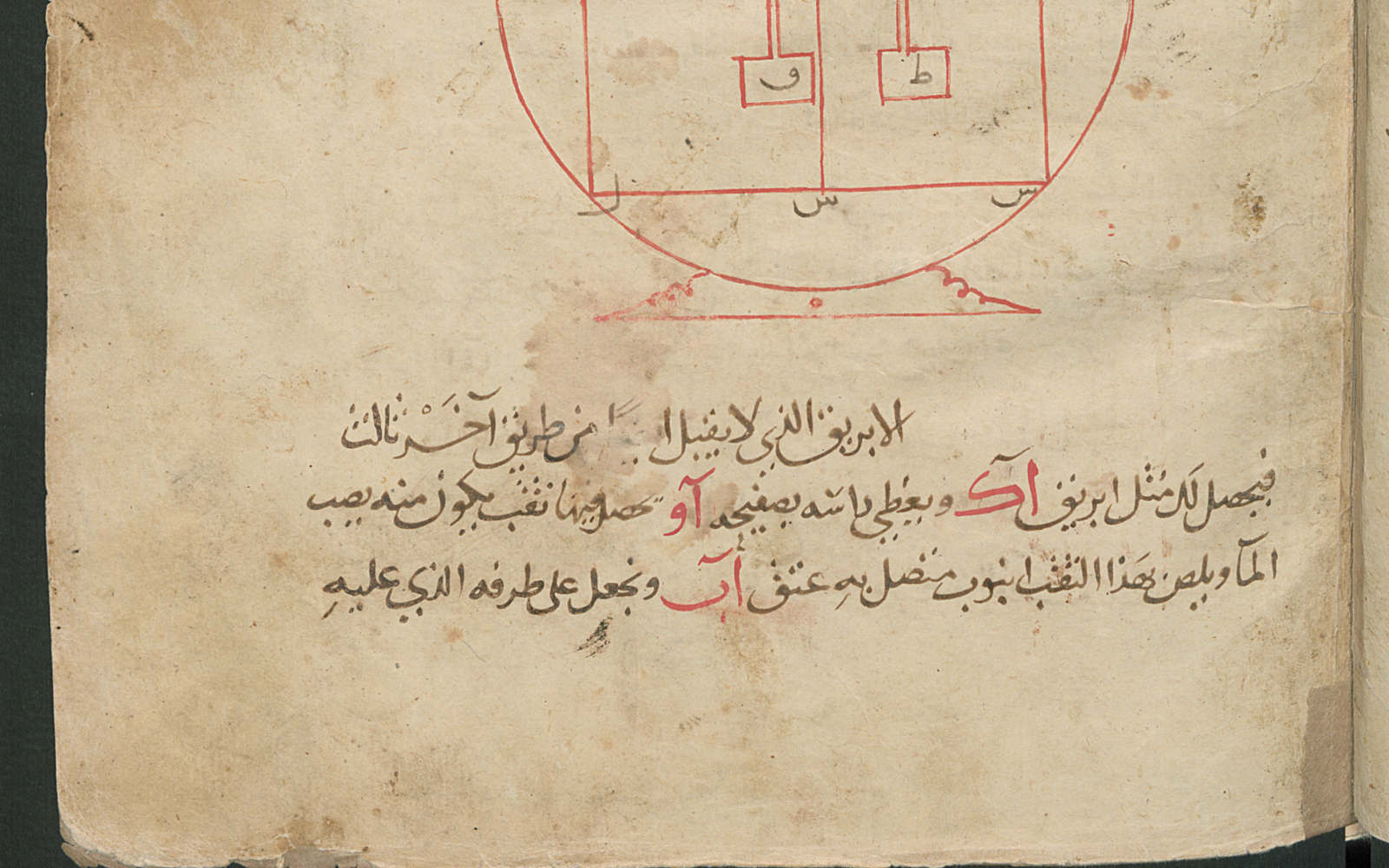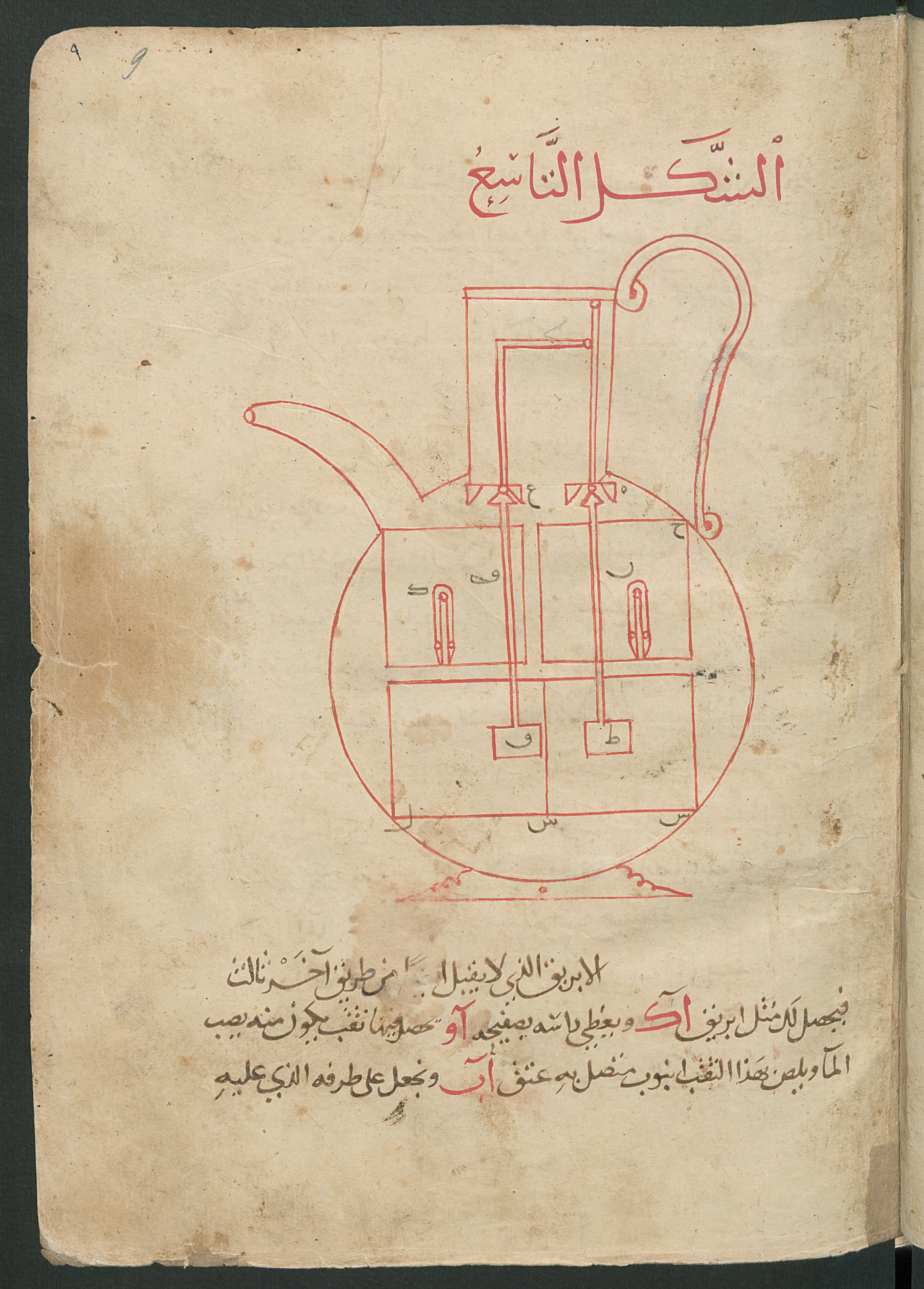Kitāb al-hiyal [Das Buch der genialen Instrumente]
- Title
- Kitāb al-hiyal [Das Buch der genialen Instrumente]
- Medium / Material / Technic
- Digital copy of the manuscript from 1209
»The Book of Ingenious Devices«, shown here as a digitalization of a 1209 hand-written edition, is the work of three brothers – Ahmad, Muhammad, and Hasan bin Mūsā ibn Shakir. The sons (Banū) of Mūsā ibn Shakir are early representatives of the Islamic Golden Age (750–1258 AD), a period of scientific flourishing. The Arab culture of knowledge provided important impetus for the entire Mediterranean world, ultimately also impacting the European Renaissance. In a comparative sense, this heyday can be considered a Renaissance phenomenon in its own right: Much like their European counterparts, the three scholars reactivated ancient Greek philosophy and engineering knowledge and rediscovered techniques from Persia, China, and India. Thus equipped, the Banū Mūsā became prolific inventors and eventually described and iconographically represented a hundred mechanical apparatuses and automata.
A broad range of contraptions are powered by water, wind, animals, or gravity, both for purposes of facilitating everyday tasks and providing playful entertainment. Their inventions range from lamps, containers, tools for mechanized work over extended distances, valves for controlling the flow of water, time keeping instruments, and systems of bellows and pipes for working in hazardous breathing conditions underground all the way to mechanized musical instruments. There can be no doubt that »Kitāb al-Hiyal« is a critically important media-archaeological document.
Courtesy Staatsbibliothek zu Berlin, Stiftung Preußischer Kulturbesitz, Orientalische Abteilung

